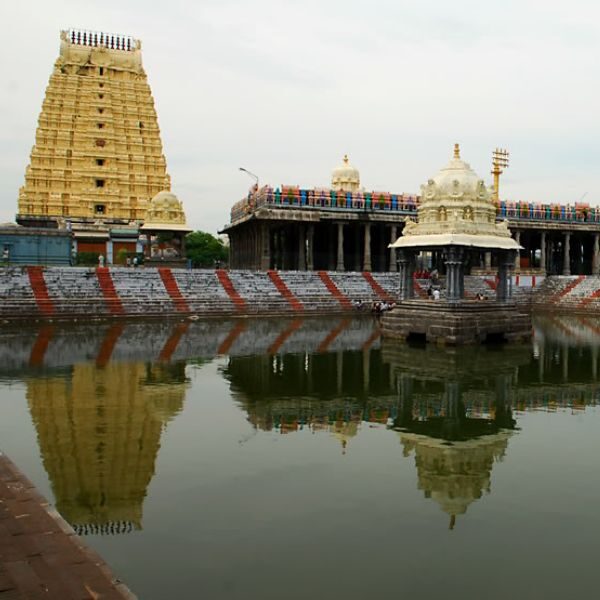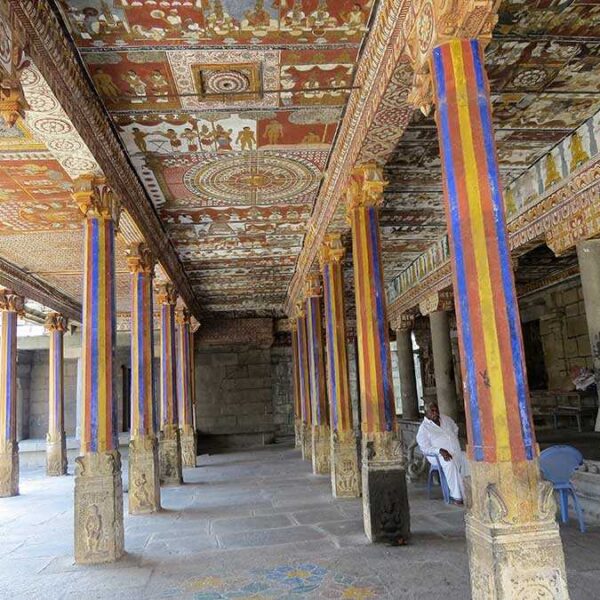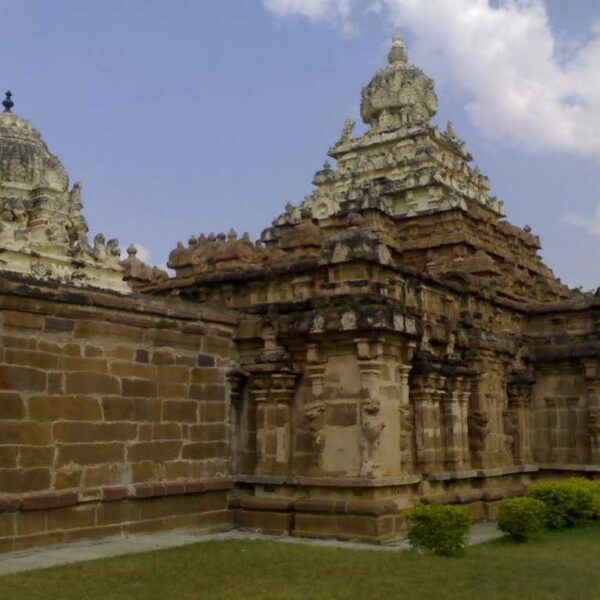Complete Guide about Ekambareswarar Temple
-
Location
Ekambaranathar Temple, Ambigapadeeswar temple, Kilambi, Tamil Nadu 631502
-
Timings
Every day
5:30 AM to 12:00 PM
& 4:00 PM to 9:00 PM -
Entry Fee
No Entry fee


Ekambareswarar Temple
About Ekambareswarar Temple
One of the well-known Hindu temples honouring Lord Shiva is the Ekambareswarar Temple, which is situated in Kanchipuram in the Indian state of Tamil Nadu. Kanchipuram. It is one of the five main Shiva temples, known as Pancha Bootha Sthalams, which each symbolise a different natural element. The Earth is represented by this temple. Thiruvanaikaval Jambukeswara (water), Chidambaram Natarajar (ether), Thiruvannamalai Arunachaleswara (fire), and Kalahasti Nathar are the other four temples in this group (wind).
The temple spans more than 23 acres (93,000m2). The Raja gopuram, or temple entry tower, is one of the highest in South India, standing at 59 metres. The Aayiram Kaal Mandapam, also known as the “hallway with a thousand pillars,” which was constructed by the Vijayanagar Kings, is one of the temple’s outstanding features. There are 1,008 Siva lingams adorning the inside walls of the temple. The complex is 25 acres in size, features five courtyards called prakarams, and a hall with a thousand pillars. The temple tank, Kampai Tirtha, is thought to contain an underground holy river.
Unlike other Shiva temples in Kanchipuram, this one does not have a separate Parvati shrine. Locals think that Ekambaranathar’s consort is the Kamakshi Amman Temple. Within the temple compound, there is a little Vishnu shrine called Thiru Nilaaththingal Thundathan. The temple is praised by the Alvar saints as one of the 108 Divya Desams and Vishnu is worshipped as Vamana Murthy. A 3,500-year-old mango tree known as the “temple tree” or “sthala-virutcham” is claimed to produce four different varieties of mangoes from each of its four branches.
Guruvayur Temple Official website Link www.guruvayurdevaswom.in
The History
One of India’s oldest temples, this enormous one has been there since at least 600 AD. Tamil poetry from the second century AD mentions the Kumara kottam and Kama kottam (currently the Kamakashi Amman temple and the Subramanya temple). Initially, the Pallavas constructed the temple. At the temple, the Vedantist Kachiyapper worked as a priest. The subsequent Chola Kings demolished the previous building and rebuilt it. With the assistance of local authorities, Adi Sankara, a saint from the 10th century, renovated Kanchipuram and expanded this temple, along with Kamakshi Amman and Varadaraja Perumal Temples.
The Vijayanagar rulers contributed significantly to the temple during the 15th century, which Vallal subsequently expanded. Pachiyappa Mudaliar used to go frequently from Chennai to Kanchipuram to pray at this temple. He lavished money on its refurbishment during the British era, and a temple pillar depicts him sitting on a horse. In order to save time travelling to Kanchipuram, Pachiappa Mudaliar subsequently built a temple with a similar design and the same name in Chennai. The Archaeological Survey of India report from 1905–1906 mentions extensive rehabilitation work Nattukottai Chettiar did on the temple.
Inscriptions :
Inscriptions from 1532 CE (record 544 of 1919) attest to Achutaraya’s donation of a number of villages. Achutaraya’s directive to give an equal gift to both temples was broken by Vira Narasingaraya Saluva Nayaka, who gave more land to the Ekambaranathar temple than the Varadaraja Swamy temple. Upon learning this, Achutaraya divided the territory between the two temples evenly.
Deity in Temple :
Ekambareswarar, also known as Shiva and worshipped as the Prithivi Lingam, is the presiding deity here. Lord Shiva is a swayambumurthi at the temple. The sanctuary sanctorum is adored by the Mother Kamakshi-made sand Shivalinga. On the Linga, the hand icon representing Mother embracing the Lord is still discernible. The main shrine, which has been used for worship for many years, is decorated with a Somaskanda panel that features Shiva, Parvati, and Skanda.
Dekho Apna Desh
The DAD of Tourism
Get Direction to Ekambareswarar Temple
Near Attractions






